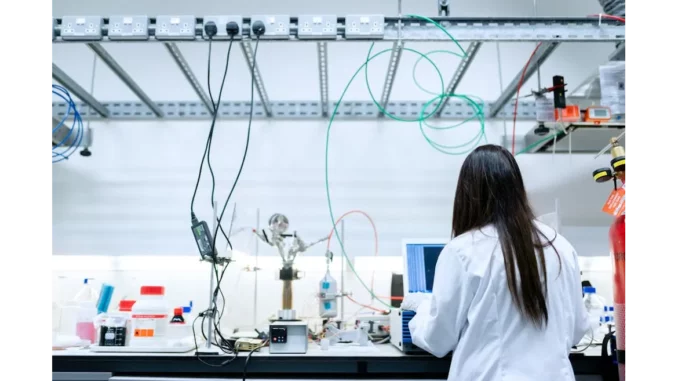
Upon meeting Dr Emily Carter, a postdoctoral fellow at the esteemed Nano-Cybernetic Biotrek Lab at MIT, one is instantly captivated by her fervour. Dr Carter possesses the kind of zeal reminiscent of someone poised on the threshold of a scientific breakthrough, one that could revolutionise our understanding and treatment of neurological disorders. Her research, alongside her colleagues, focuses on a remarkable innovation: minuscule, battery-free devices designed to monitor and perhaps even repair neurons at the cellular level.
“These advancements,” Dr Carter began with palpable enthusiasm, “are not solely about observing cellular processes. They represent a paradigm shift towards interacting with these cells, fostering healing and enhancing functionality, particularly in neuronal contexts.”
Our conversation delved into the intricate realm of neurons, the elemental units of the nervous system. Historically, cells have been regarded as mere building blocks, but neurons unveil a staggering complexity. Within each neuron, activities unfold across specialised compartments such as axons, dendrites, and the cell body. Dr Carter elucidated the importance of understanding and controlling these regions, as they are key to cellular functions and hold the potential to unlock treatments for multifaceted neurological conditions.
At the forefront of these developments are the devices engineered by MIT’s team. Constructed from a pliable polymer known as azobenzene, these subcellular-sized devices are crafted to envelop neuronal structures without inflicting damage. “Picture a gentle embrace around axons and dendrites,” Dr Carter illustrated with a gesture, “enabling us to measure and modulate neuronal activity with unprecedented precision.”
This precision is critical when considering potential treatments for diseases such as multiple sclerosis (MS). In MS, the degradation of the protective myelin sheath around neurons disrupts the transmission of electrical signals. The azobenzene material, functioning as an insulator, holds promise as synthetic myelin, potentially restoring lost functionality. “The aspiration,” Dr Carter stated, “is for these devices to operate like a secondary skin, bolstering neurons in executing their functions effectively.”
The discussion transitioned to the technical challenges the team surmounted. Unlike conventional semiconductor manufacturing, which necessitates expensive cleanroom environments, the MIT researchers pioneered a more straightforward technique. They employed a stamp to shape thousands of these devices from a single drop of azobenzene placed on a dissolvable layer. This creative approach not only curtailed costs but also enhanced scalability, making it feasible to produce large quantities of these cellular devices.
“Flexibility was a necessity,” Dr Carter remarked, “as neurons are delicate and intricate. Our devices needed to be malleable enough to conform without causing harm.” The thin-film azobenzene sheets achieve this by rolling into microtubes that snugly fit around neuronal components.
As Dr Carter elaborated on potential applications, her words conjured a vision of a future where these devices could form microscopic circuits, capable of measuring or even modulating individual cell functions. By incorporating optoelectrical materials, these devices could stimulate neurons, suggesting possibilities for their use as self-contained tools delivering electrical, optical, or thermal signals to cells.
“The scope of this technology’s impact is immense,” Dr Carter emphasised. “From gaining unparalleled insights into cellular behaviour to crafting minimally invasive treatments for neurological diseases, the applications are boundless.”
The team, under the leadership of Deblina Sarkar, anticipates a future where these devices could be further customised. By altering device surfaces with specific molecules, they could target distinct cell types, paving the way for personalised treatments. Dr Carter mentioned the excitement among her peers, including experts such as Flavia Vitale from the University of Pennsylvania, who perceive this as a progression towards new neural interfaces functioning at the axonal and synaptic levels.
As our conversation drew to a close, I inquired about the subsequent steps. “Extensive testing is imperative,” she conceded. “Before we can contemplate in-vivo applications, we must verify the safety and efficacy of these devices. Yet, the transformative potential they hold is undeniable.”
The work at MIT, supported by the Swiss National Science Foundation and the U.S. National Institutes of Health Brain Initiative, transcends mere scientific progress. It represents a reimagining of our interaction with the very essence of life—our cells. Dr Carter and her team’s pioneering efforts may one day revolutionise medical treatments, offering hope for conditions once deemed untreatable.
As I departed the lab, the profound potential of this research left an indelible impression. It is not merely about the healing of cells; it is about the healing of lives, one neuron at a time.


Be the first to comment